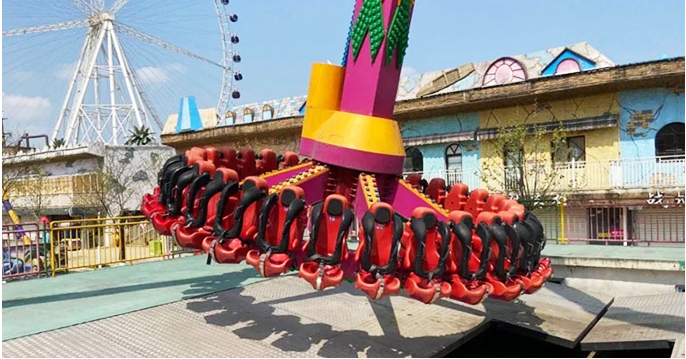- Albanian
- Arabic
- Belarusian
- Bengali
- Czech
- English
- French
- German
- Hebrew
- Hungarian
- Indonesian
- irish
- Italian
- Japanese
- kazakh
- Persian
- Russian
- Thai
- Uzbek
- Vietnamese
Exploring the Dynamics of Lateral Friction on Roller Coasters for Enhanced Ride Experience
Understanding Side Friction Coasters A Roller Coaster Evolution
Roller coasters are a staple of amusement parks worldwide, thrilling millions with their exhilarating drops, twists, and turns. Among the myriad designs, the side friction coaster stands out as one of the earliest forms of amusement rides. Rooted in the late 19th century, these coasters symbolize both engineering ingenuity and the adventurous spirit of their time. Understanding side friction coasters not only provides insight into the evolution of roller coasters but also offers a glimpse into the beginnings of the thrill-seeking culture we see today.
The Origins of Side Friction Coasters
The concept of the roller coaster can be traced back to the Russian ice slides in the 17th century, but it was not until the 1880s that the side friction coaster design emerged in the United States. One of the first notable installations was the “Switchback Railway,” created by La Marcus Thompson in Coney Island, New York, in 1884. This design featured wooden tracks with cars that relied on gravity and minimal braking to navigate the course.
Side friction coasters are characterized by their simplistic track design and reliance on friction for side supports. Unlike more modern roller coasters that utilize advanced engineering techniques such as tubular tracks and over-the-shoulder restraints, side friction coasters utilized flat, open-air cars that were guided along wooden tracks by metal wheels pressing against the sides. This meant that riders had to experience a unique sense of freedom as well as a higher risk factor, which, in turn, heightened the thrill.
The Mechanics Behind Side Friction Coasters
At the heart of the side friction coaster's design is its relatively simple mechanics. The train is composed of a series of interconnected cars that are pulled uphill by a chain lift or by gravity before descending. As the cars navigate the course, it is the side friction that keeps them from derailing. However, this reliance on friction means that the ride experience is often influenced by the weather; factors such as rain or the wear of the tracks can affect how smoothly the coaster operates.
side friction coaster

The experience offered by a side friction coaster includes a sense of weightlessness during drops and sharp turns. The open seating arrangement, often without safety harnesses, allows riders to feel a greater connection with the ride. This freedom also introduces an element of unpredictability, as the forces of gravity and inertia work together, creating a unique thrill that has attracted riders for generations.
The Decline and Resurgence
While side friction coasters enjoyed immense popularity in the early 20th century, their prevalence began to wane with the advent of safer, more technologically advanced roller coaster designs. The rise of hybrid coasters and looping designs captured the imagination of thrill-seekers, leading to the closure of many historic side friction coasters.
However, in recent years, there has been a resurgence of interest in classic rides, leading to the restoration and reimagining of many side friction coasters. Amusement parks are recognizing the value of nostalgia and the unique experience these rides provide. Some parks have even started operating new side friction models, allowing younger generations to appreciate the simple, adrenaline-pumping fun that defined an era of amusement parks.
Conclusion
Side friction coasters are more than just an old amusement ride; they represent a pivotal chapter in the history of thrill rides. Their simplistic design emphasizes the allure of adventure and the human desire for excitement. By understanding their history and mechanics, we gain a deeper appreciation for the evolution of roller coasters and the timeless thrill they continue to offer. As amusement parks strive to blend nostalgia with modern innovation, side friction coasters remain a cherished remnant of our adventurous past, inviting riders to experience the thrill of the ride in its purest form.
-
Flume Ride-Hebei Zhipao Amusement Equipment Manufacturing Co., Ltd.|Thrilling Water Attraction&NIST Safety StandardsAug.01,2025
-
Double Ferris Wheel Sale | Premium Custom RidesJul.31,2025
-
Flume Ride-Hebei Zhipao|Water-Based Attraction, Safety Standards, High-Speed DescentJul.31,2025
-
Flume Ride: Thrilling Water-Based Adventure & Advanced Engineering - Hebei ZhipaoJul.31,2025
-
Flume Ride-Hebei Zhipao Amusement Equipment Manufacturing Co., Ltd.|Thrilling Water Attraction&Customizable DesignJul.30,2025
-
Flume Ride - Hebei Zhipao Amusement Equipment | Water Coaster, Thrilling DescentJul.30,2025
